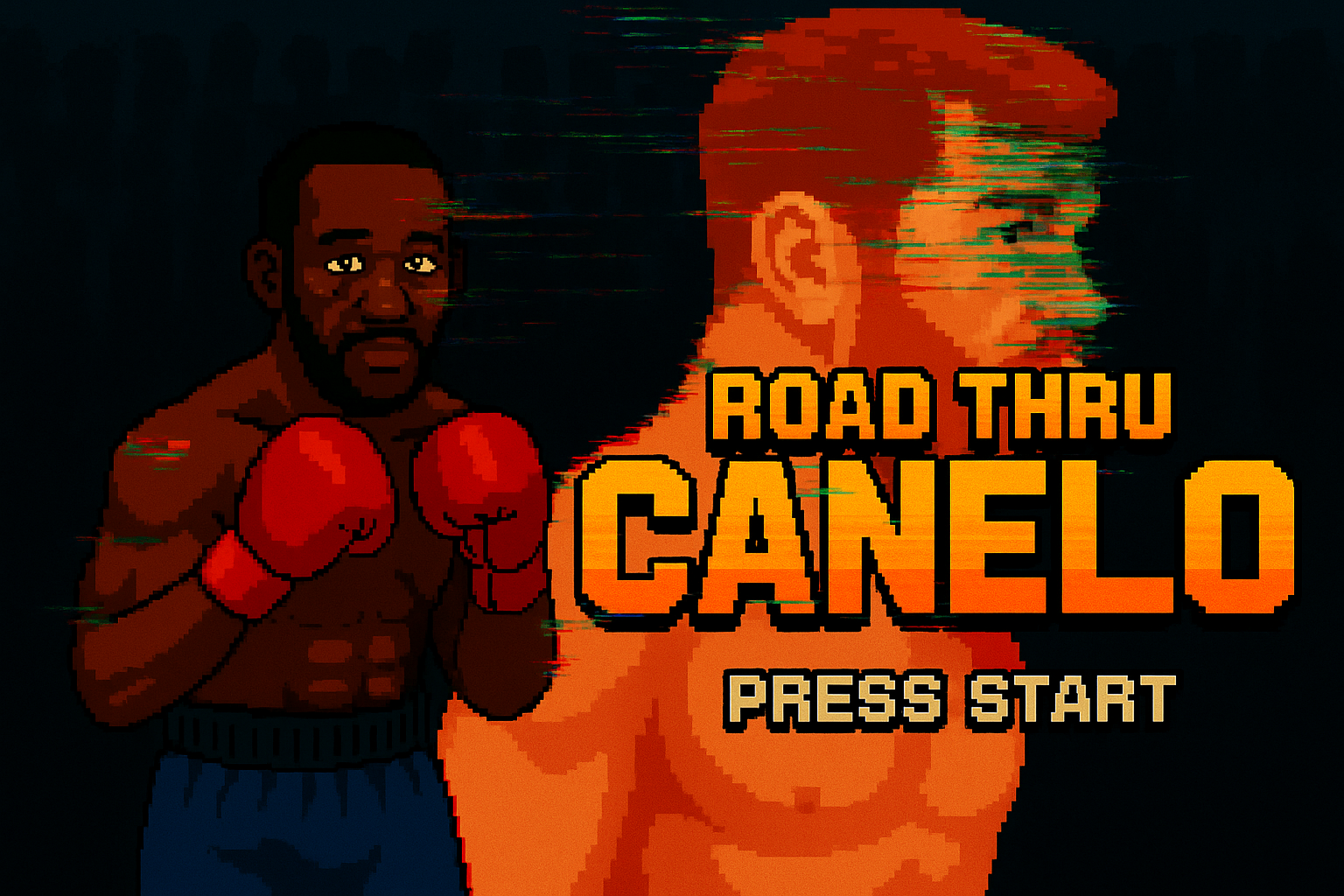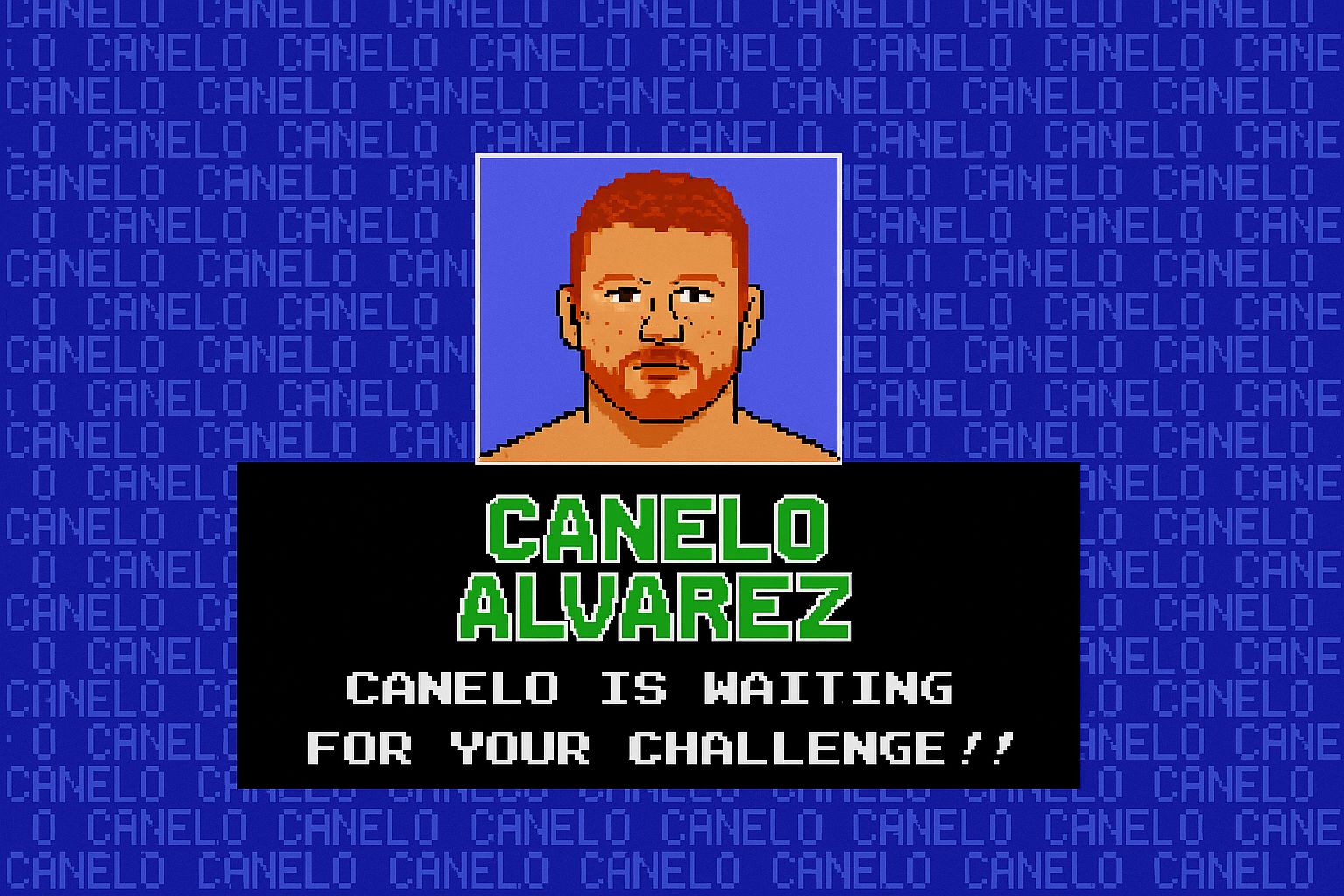The Vibe Shift: Why Everyone's Switching Their Pick to Crawford
By @codecamcode

The Awakening
If you've been on Twitter/X the last few months, you've probably seen the phrase: "The vibe has shifted." It's what people say when a storyline collapses — when the narrative everyone was repeating suddenly feels flimsy, and a new reality takes hold.
That's exactly what's happening with Canelo Álvarez vs. Terence Crawford.
For months, the script was locked: Canelo is too big, too strong, too comfortable at 168. Crawford has never fought at that weight. Eventually, the Mexican superstar would land, and Crawford would have to run.
But now? The consensus is cracking. Trainers, fighters, analysts, and fans are looking closer — at the stats, the tape, the history — and they're switching their pick to Crawford.
Trainer Robert Garcia summed it up best:
"Now, I switch. I always thought Canelo was going to be too big and too strong, but now I'm going to pick Crawford to win this fight."
The vibe shift is real.
The Old Storyline: Bigger Man, Bigger Punch
The size narrative isn't new.
In the buildup to Terence Crawford vs. Errol Spence Jr., the talking point was hammered endlessly: "Spence is the bigger man." Bigger frame. More physical. He'll bully Bud. He'll ragdoll him.
That storyline dominated the airwaves — until fight night.
Former champion Paulie Malignaggi once dismissed this very matchup with Canelo in the same way:
"Crawford is too small, Canelo is going to beat him."
But like others, he's flipped.
"I give Crawford the edge."
Crawford Killed the 'Bigger Man' Myth
In July 2023, Crawford stood in range with Spence — and dismantled him.
The numbers: Crawford landed 185 of 369 (50%), including 60% of his jabs. Spence landed just 96 of 480 (20%). In the final five rounds, Crawford outlanded him 87 to 33.
Spence's post-fight words were blunt:
"He was just better than me tonight. He was more sharp, he was timing me, and I couldn't get off."
That night, the myth died. Size alone wasn't enough.
Even Teófimo López, who initially leaned on the size argument, has shifted:
"I've been saying Canelo, but I think Crawford might pull something… the odds are in his favor."
The Misunderstood Stylist
Crawford isn't a runner. He doesn't circle the ring to survive. He's a counter-puncher who thrives in the pocket.
He specializes in catch-and-shoot — making you miss by inches, then punishing you before you reset. It's the perfect antidote for big punchers: turning their offense into his.
Canelo's Timing Isn't Automatic
Yes, Canelo has shown flashes of sharp timing — in the Golovkin trilogy, against Jaime Munguía — but against movers and elite athletes, he looks different.
- Vs. Lara: Landed only 97 of 415 (23%), out-jabbed 55–9.
- Vs. Bivol: Landed just 84 of 495 (17%), looking one beat behind.
- Vs. Scull (2025): Averaged a career-low 40 punches/round.
Now he faces Crawford — quicker than Lara, sharper than Bivol, with the added wrinkle of a switch-hitter who can flip the stance puzzle mid-round.
As Roy Jones Jr. put it:
"Bud is still hungry for that recognition… when you're hungry like that, you're very hard to detour."

Canelo's Bag is Smaller Than People Think
The danger in overrating power is assuming a clean landing is inevitable.
But what happens if the power shots don't land clean?
We saw it against Dmitry Bivol. Through nine rounds, Bivol outlanded him consistently — in the 9th alone the count was 22–8. Canelo's output sagged, his body language told the story, and there was no Plan B.
That's the risk here. Crawford doesn't just neutralize the first punch — he forces you to keep answering new questions. Does Canelo still have those answers?
And this is where the danger lies for Canelo. If his go-to plan of pressuring and landing heavy shots doesn't break Crawford, then what comes next? Against Bivol, when the usual plan failed, the fight simply slipped away. This is the "bag problem" — if the first trick doesn't work, the show is over. Against an adaptive fighter like Crawford, that's a fatal gap.
The Historical Lineage
Crawford wouldn't be the first smaller man to shock a bigger champion.
- Durán–Barkley (1989): Barkley threw more, but Durán's counters swayed the judges.
- Holyfield–Tyson (1996): Tyson landed 29% to Holyfield's 51%.
- Pacquiao–De La Hoya (2008): Pacquiao outlanded him 224–83; Oscar quit on the stool.
- Leonard–Hagler (1987): Leonard landed 49% to Hagler's 37%.
- Spinks–Holmes (1985): Light heavyweight champ outpointed a 48-0 heavyweight king.
Skill and timing have toppled size before.
Bernard Hopkins recently put a number on it:
"He has a legitimate chance, over 60%… he has an 85% chance to beat Canelo."
The Athlete Factor
Canelo has faced good fighters — Charlo, Plant, Saunders, Munguía. But none are regarded as generational athletes. Crawford is.
This is what separates him: he's ambidextrous, able to switch orthodox to southpaw mid-round, not for flash but to reset the geometry of the fight. He can choose if and when to put Canelo in an open stance, when to walk him into a counter left, when to change the jab angles. That ability to literally rearrange the board mid-round is something Canelo hasn't consistently solved, especially against southpaws.
And it matters who you're facing. No one thinks of Plant, Saunders, or Munguía as "great athletes." They're solid fighters, but not transcendent. Crawford is both. That's why Canelo himself acknowledged it:
"Crawford is way better than Mayweather."
You can argue about the comparison, but the fact that Canelo said it tells you something. He knows he's fighting a once-in-a-generation athlete with dimensions he hasn't had to solve before.
The Resume Mirage and the Aftermath Test
Start with the premise everyone repeats: "Crawford hasn't fought anybody."
Look at his opponents after they lost — Jeff Horn never regained elite form. Viktor Postol, once an undefeated WBC champion, faded from the spotlight. Julius Indongo, unified champion when he faced Crawford, was stopped multiple times afterward. Kell Brook retired within two fights. Shawn Porter retired immediately. Errol Spence hasn't fought since.
That, critics say, proves they were never great.
But then look at Canelo's opponents — and the same pattern appears.
- Sergey Kovalev: Stopped by Canelo in 2019, then beaten in two rounds by Bektemir Melikuziev, retired.
- Caleb Plant: Beat Anthony Dirrell, then lost back-to-back to David Benavidez and Armando Reséndiz, falling from top contention.
- Edgar Berlanga: Once hyped, recently stopped by Hamzah Sheeraz.
- Billy Joe Saunders: Retired immediately after losing to Canelo.
- Danny Jacobs: Lost to John Ryder, retired without another signature win.
- Jermell Charlo: Came up two divisions off inactivity, has done nothing since.
- James Kirkland: Knocked out quickly and never returned to prominence.
So if Crawford's résumé looks thin because his opponents faded, then so does Canelo's. The truth is simple: Canelo's fights had bigger purses, brighter lights, and PPV branding. They felt bigger. But in the ring, punch-for-punch, the caliber hasn't been dramatically different.
That realization — that the résumés are more alike than people admit — is a major part of the vibe shift.
The Madrimov Argument — Misread Evidence
Another common talking point centers on Israil Madrimov. The claim: "If Crawford couldn't knock out Madrimov, how can he hurt Canelo at 168?"
On the surface it sounds convincing, but the comparison doesn't hold. Madrimov is a decorated amateur, a switch-hitter with quick feet, in-and-out rhythm, and awkward, herky-jerky timing that makes clean connections difficult. Crawford went twelve rounds with him not because his power didn't carry, but because Madrimov's style limited knockout chances.
Canelo is the opposite kind of challenge: flat-footed pressure, selective power punching, slower feet, and more predictable rhythms. He doesn't bring Madrimov's athletic unpredictability.
In other words: Madrimov showed how Crawford adjusts to an awkward athlete. That doesn't forecast what happens against a more traditional fighter like Canelo.
Division Experience Is Overrated
Critics say Crawford hasn't fought at 168. History says it doesn't matter.
- Emanuel Navarrete won the WBO title in his very first fight at 130.
- Jesse "Bam" Rodriguez did the same at 112.
- Usyk went from undisputed cruiser to undisputed heavyweight in eight fights.
- Legends like Chávez and Benítez did it decades earlier.
Division "experience" doesn't win fights. Skills do.
Why the Picks Are Flipping
People aren't switching because it's fashionable; they're connecting the dots:
- Crawford doesn't run — he counters in range.
- The "bigger man" myth already collapsed against Spence.
- Canelo's Plan B is missing.
- History is full of smaller men beating bigger champs.
- Crawford's switch-hitting is a nightmare puzzle.
- Résumé "quality" is branding, not substance.
- Madrimov ≠ Canelo. Styles make fights.
- Division experience is overrated.
The Final Picture
Picture it:
Crawford stands in front of Canelo Álvarez. He catches a hook, snaps back a right. Switches stance. Slips, fires.
Round after round, the smaller man chips away. Not with retreat, but with mastery in the pocket.
If that happens, it won't just be an upset. It'll be proof the vibe shift was real — that the public saw the truth before the fight, and they were right to switch their pick.